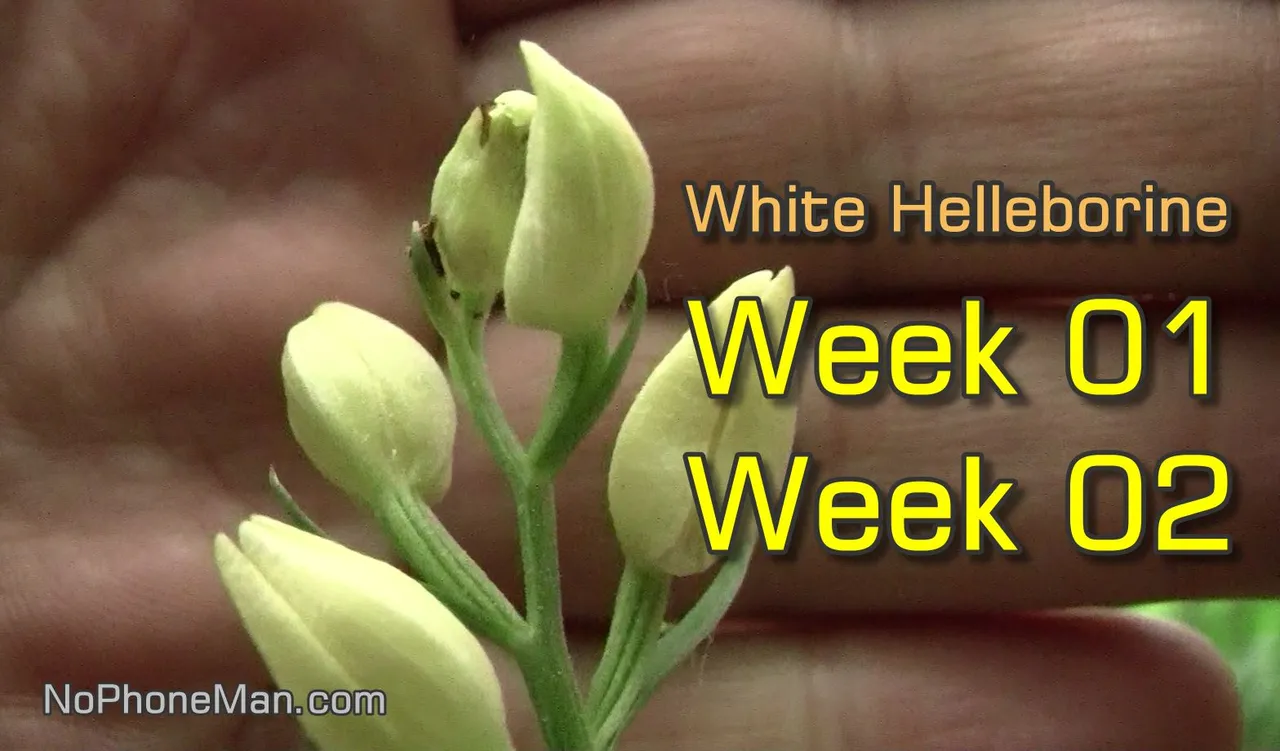A few weeks ago I made a video about two types of wild Orchids growing in my woods. One was a Bird’s Nest Orchid (Neottia nidus-avis), which is unique in that unlike most plants, it doesn’t photosynthesize. The other Orchid was a Helleborine (Cephalanthera sp.), which due to its young age was not possible to identify more precisely at the time. Here’s the video:
The Helleborine is a rare type of Orchid whose global conservation status is “Vulnerable”, according to the UK’s Natural History Museum. I was really excited to have found one in the forest. Having never found it here before, I didn’t think I had any growing in this area.
Since the previous video, I have found two more locations with Helleborines growing in them, and the one which showed up first has since developed flowers. This has allowed me to more reliably identify it. It’s a White Helleborine (Cephalanthera Damasonium).
The other two types of Helleborines which exist in Central Europe are Red Helleborine (Cephalanthera rubra), which blooms red, and Narrow-leaved Helleborine (Cephalanthera longifolia), whose leaves are at least 5 times as long as they are wide, whereas the leaves of the White Helleborine are 3 to 4 times as long as they are narrow.
With the Red and Narrow-Leaved Helleborines quite clearly excluded, my unexpert opinion is that the Orchids I found were White Helleborines.
The first one found grew to about 30cm in height and developed several flowers. The ones that started growing later grew only about 10cm tall and developed only a couple flowers, or none at all. I suspect the severe and long lasting drought may be behind it, as it is behind the poor development of a lot of vegetation.
I thought ot possibly helping the rare Orchids out by watering them, but eventually decided against it so as not to hamper their need to become hardy in today’s unpredictable world.
I plan to make more videos on how the Helleborines are doing in the near future.
I hope the video was helpful and educational for you, but please bear in mind that I’m not an expert and may be wrong about anything I say. Always do your own research and if you need an expert advice, do consult an actual expert. Please review my disclaimers at https://www.nophoneman.com/medical-disclaimer/ and https://www.nophoneman.com/wild-edibles-disclaimer/.
00:00 NPM Disclaimer
00:11 Week 01 - Helleborine in bloom
01:01 Little spider and weevil on Helleborine
01:31 Song of Common Chaffinch (Fringilla coelebs)
02:07 Helleborine on the trail between Injured Badger Hole and Lower Scratchpost
04:25 Third location with two Helleborine plants found
05:25 Week 02 – two Helleborines
06:42 Helleborine with open flowers
07:56 White Helleborine identified
08:18 White Helleborine location of growth
08:39 My first Helleborine
09:11 White Helleborine flower closeup
09:21 Second Helleborine hasn’t grown up
10:37 Hardening Helleborines up
Keep rocking :o)
Mark
https://www.nophoneman.com/
▶️ 3Speak

